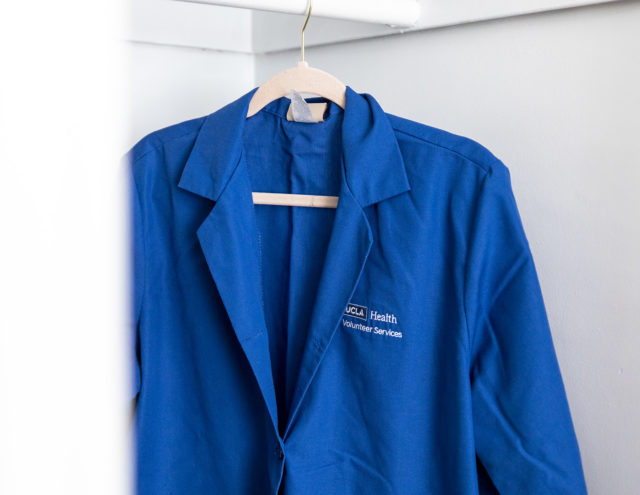Volunteering and community service were founded upon giving back, person-to-person. But once the pandemic hit, in-person interactions became seemingly impossible overnight.
As a result, volunteering and service-learning have taken on a whole new look with service-based classes and organizations adapting to our new reality.
Saman Andalib, a third-year neuroscience student and internal director of the Student Stroke Team at UCLA, a cohort of students who normally assist in stroke clinical research trials at the Ronald Reagan UCLA Medical Center, said the organization has had to shift their normal functions to a virtual environment.
“(The COVID-19 pandemic has) presented a whole new series of challenges that have led us to adapt our program to become much more education-oriented and trying to get our members well prepared mentally to come back into the ED when we become able to,” Andalib said.
These adaptations have included a variety of guest speakers and informational presentations to educate students while they are unable to work in person.
“We’ve tried to transition it to bring in a lot of different guest speakers from the emergency department in specialties like interventional radiology, neurology (and) neurosurgery to speak to our students and inform them with what’s going on within the stroke network, how the ED is evolving since the beginning of the pandemic,” Andalib said.
Although the organization has not been able to fulfill its typical roles, Andalib said the stroke team has managed to make the most of the situation and see the benefits of a virtual platform, including increased collaboration and connectedness among its team members. In order to prepare students for post-pandemic work, he said club members regularly give presentations on stroke education.
“We have members that are living in Brazil and other international locations so they’ve been able to stick with our program and do all the research things that we all know they love to do,” Andalib said.
Some organizations have managed to have in-person interaction during the pandemic, albeit with modifications.
Hamza Ali, a fourth-year human biology and society student, is on the leadership board for the LA branch of COVID Community Childcare, an organization that safely provides free in-home child care, plus virtual tutoring services, to children of medical workers, ranging from physicians and nurses to custodians.
“During this pandemic, health care workers have been called to work long, stressful hours, and they need their children to be watched,” Ali said. “There’s also this huge, huge problem with kids across the country falling behind in virtual classes because they’re not used to Zoom school.”
Ali said the experience has been rewarding, despite the health risks at play.
“We are still offering at-home child care services for these medical workers so we’re still going to their homes and babysitting their children, despite there being a pandemic,” he said. “So, … we are essentially putting our lives at risk.”
Nadya Higgins, a first-year pre-psychobiology student in the Sages & Seekers program, one of the service-learning programs some Cluster 80: “Frontiers in Human Aging” students are in, said in an emailed statement that some aspects of real-life interactions do not translate well to online spaces such as Zoom.
“I have poor internet connection at times, and it can often interrupt the conversation if we’re lagging, frozen or cutting out,” Higgins said in the statement. “I also miss the eye-contact aspect of in-person engagement, since on Zoom you can’t really tell if they’re looking at you or not.”
Despite these difficulties, Higgins said she has a positive view of the program, which connects students with older adults to establish intergenerational relations, and regards it as an opportunity for more personal interactions not otherwise seen in Zoom classes.
“It feels fulfilling to be part of a group that is working to create connections and promote positive interactions, especially during the pandemic,” Higgins said. “I also genuinely look forward to and enjoy my weekly conversations with my assigned sage (older adult).”
Co-heads of Bruins Give Blood Becca Nelson, first-year microbiology, immunology and molecular genetics student, and Lauren Heiberg, first-year human biology and society student, said they have learned to make the most of social media in order to increase blood donations during this time.
Born out of the pandemic, Bruins Give Blood reaches out to other organizations in response to the lack of blood donations on campus.
“We’re working with the high schools in the LA area to do a high school blood drive competition, … and then we’re also working with (University Blood Initiative) to encourage clubs to donate — so there’s a program where clubs can sign up, and they get gift cards and other rewards for their club if they get enough donors,” Heiberg said.
Nelson said that initiating personal connections, recruiting donors and expressing a sense of gratitude to donors have been more challenging during the pandemic.
Though the COVID-19 pandemic has brought on hurdles, many service-based classes and volunteer organizations have stepped up to the challenges and continued to stay connected to their missions.

